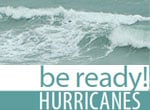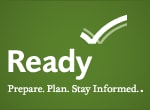Stay Safe During a Wildfire

Key Points:
- Pay attention to your local weather forecast and to air quality at airnow.gov.
- Always follow instructions given by local emergency management officials.
- Stay inside if authorities tell you to do so.
Protect yourself from smoke.
It’s important for everyone to reduce their exposure to smoke. Wildfire smoke irritates your eyes, nose, throat, and lungs. It can make it hard to breathe and make you cough or wheeze. Children and people with asthma, COPD, heart disease, diabetes, chronic kidney disease, or who are pregnant need to be especially careful about breathing wildfire smoke.
| Alert Color | Level of Concern | Value of Index | Description of Air Quality |
|---|---|---|---|
| Green | Good | 0 to 50 | Air quality is satisfactory, and air pollution poses little or no risk. |
| Yellow | Moderate | 51 to 100 | Air quality is acceptable. However, there may be a risk for some people, particularly those who are unusually sensitive to air pollution. |
| Orange | Unhealthy for Sensitive Groups | 101 to 150 | Members of sensitive groups may experience health effects. Most people are unlikely to be affected. |
| Red | Unhealthy | 151 to 200 | Some people may experience health effects; members of sensitive groups may experience more serious health effects. |
| Purple | Very Unhealthy | 201 – 300 | Health alert: The risk of health effects is increased for everyone. |
| Maroon | Hazardous | 301 to 500 | Health warning of emergency conditions: Everyone is more likely to be affected. |
Air Quality Index (AQI) Basics for Ozone and Particle Pollution.
Learn more: AQI Basics | AirNow.gov
Check the air quality in your community.
- Check your community’s outdoor air quality using the Air Quality Index (AQI) at airnow.gov or on your phone’s weather app.
- Stay inside if authorities tell you to do so.
Keep smoke outside.
- Choose a room you can close off from outside air.
- Set up a portable air cleaner or a filter to keep the air in this room clean even when it’s smoky in the rest of the building and outdoors. If you use a do-it-yourself box fan filtration unit, never leave it unattended.
- As much as possible, avoid burning anything indoors, including candles, gas, propane, incense, or wood. You can also keep indoor air quality safe by not smoking, using a stove to cook, or vacuuming.
- If you have a central air conditioning system, use high efficiency filters labeled “HEPA“ or MERV 13 or higher to help clean the air. If your system has a fresh air intake, set the system to recirculate mode or close the outdoor intake damper.
If you have to go outside, wear a respirator.
- If you must go outside, reduce your smoke exposure by wearing a NIOSH Approved respirator [PDF – 330 KB]. A respirator is a mask that fits tightly to your face to filter out smoke before you breathe it in.
- Wear the right respirator and wear it correctly [PDF – 2.7 MB].
- If you have heart or lung disease ask your doctor if it is safe for you to wear a respirator.
Can children wear respirators?
Children ages 2 years and older can wear respirators and masks. However, NIOSH Approved respirators do not come in suitable sizes for very young children.
- Choose a respirator or mask that your child can wear properly. If a respirator or mask fits poorly or is uncomfortable, a child might take it off or wear it incorrectly (for example, pulling it down from their nose). This reduces the intended benefits.
- Choose a size that fits over the child’s nose and under the chin but does not impair vision.
- Follow the user instructions for the respirator or mask. These instructions may show how to make sure it fits properly.
NIOSH Approved respirators and international respirators may be available in smaller sizes that fit children. However, manufacturers typically design them to be used by adults in workplaces. They may not have been tested for broad use in children.
Pay attention to health symptoms.
- Pay attention to any health symptoms if you have asthma, COPD, heart disease, diabetes, chronic kidney disease or are pregnant. Get medical help if you need it.
- Learn more about protecting yourself from wildfire smoke.
Protect pets and other animals.
- Pets and other animals can be affected by wildfire smoke too. Learn how to protect pets and livestock.
- Some evacuation centers do not accept animals. Check Petfinder’s Shelter Center or RedRover for information on local animal shelters and rescue groups.
Keep track of fires near you.
- Listen to the Emergency Alert System (EAS) and National Oceanic and Atmospheric Administration (NOAA) Weather Radio for emergency alerts.
- Monitor fires in your area using mapping tools. AirNow’s Fire and Smoke Map has a map of fires throughout North America. NOAA’s Fire weather outlook page maps fire watches and warnings.
Evacuate safely.
You may be asked by public authorities to evacuate or you may decide to evacuate. Know how to evacuate safely and how to develop a family disaster plan, including:
- Finding out what could happen to you
- Making a disaster plan
- Completing the checklist
- Practicing your plan
Stay healthy during power outages.
Large fires can cause long-term power outages. Read about what to do if your power goes out, including:
- Preventing carbon monoxide poisoning
- Food safety
- Safe drinking water
- Power line hazards


